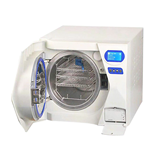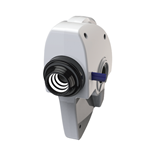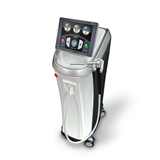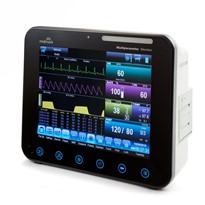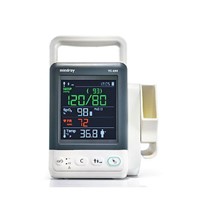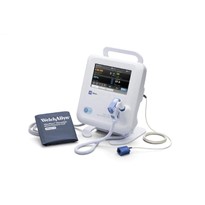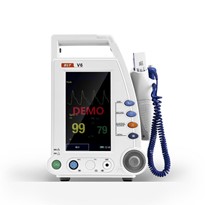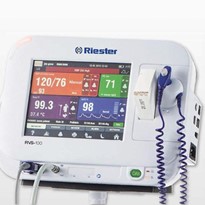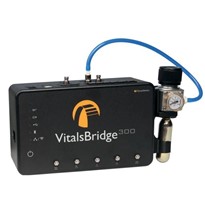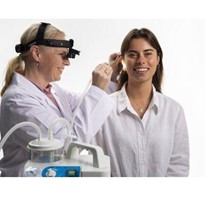Mr Power is a lecturer at The University of Melbourne and lead audiologist at its Melbourne Hearing Care Clinic, whilst Dr Hanby is project manager for Phonak’s Lyric hearing aids in Australia and an Ear Health Courses consultant.
Due to the demands of their roles they need to rely on equipment that won’t throw further complications into the equation. The VorOtek O Scope, invented in Australia specifically for ENT and audiological work, is their preferred teaching and in-practice tool for wax removal and deep canal procedures.
There are two versions: a head-band model and a spectacle frame model. They both combine LED illumination with a unique optical pathway for looking in ear, nose and throat cavities.
Depth perception and stereoscopic vision is described as the biggest benefit of the VorOtek O Scope, which allows both eyes to reach the bottom of the ear canal via unique converged optical pathway of laser-aligned mirrors and precision magnifiers. This is different from conventional loupes or phone otoscopes, where only sight from one eye is able to reach the full depth of the canal leading to poorer depth perception and monocular vision.
For Practitioners like Power and Dr Hanby, accurate depth perception dramatically enhances their ability to judge very small distances, which is imperitive deep within the canal. This in turn minimises patient discomfort, reduces the risk of accidental contact with sensitive ear structures and avoids complications like inadvertently pushing ear wax deeper into the canal or accidental ear drum damage. The viewing capabilities combined with the exceptional shadow-free LED illumination are exceptional.
“If you can do your job with greater precision, it will be more comfortable for the patient,” Power says. “If using light that’s colouring the skin, you can’t see where some of those subtle bruises or irritation scratches are so it helps to keep the anatomy neutral.”
He says the VorOtek O Scope is mainly used for wax removal, but an equally important application is for more thorough otoscopy.
“It gives us greater accuracy and precision over finer, more detailed techniques we need to apply when identifying whether anything suspicious is going on in the ear, removing bits that have fallen off hearing aids, doing wax removal, or manipulating or placing small objects in the ear, such as a probe or microphone tubes,” he says.
“For trickier cases, having good illumination and magnification makes difficult tasks much easier.”
A perforated eardrum was the main risk of not being able to see deep into the ear canal to perform procedures or place hearing aids, Power explains.
“I’ve seen many ears unfortunately that have been syringed out by GPs or practice nurses, where they have not visualised the ear canal properly,” he says, noting some GPs ask patients to sign a waiver, indicating risks.
“With the VorOtek O Scope you can be much more precise where you are removing the wax from and have better judgement on whether the wax should be left alone or the best way of removing a foreign body. It allows for safer, more precise, more effective and gentle care of the ear.”
He says other otoscopes, including pen and phone versions, have much lower resolution, less light and lower quality of optics and illumination which can provide inaccuracies in colour and representation. This can make it harder to detect differences between where the eardrum starts and the canal is. People might be left guessing if it’s wax or a shadow.
“Using both eyes is what gives depth of perception. You can work in that visual field and if using a curette or suction cannula, depth of perception guides precisely where you need to place your instrument.”
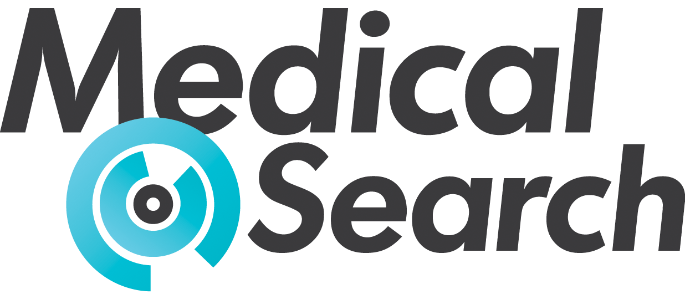







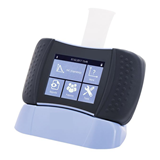








-160x160-state_article-rel-cat.png)

